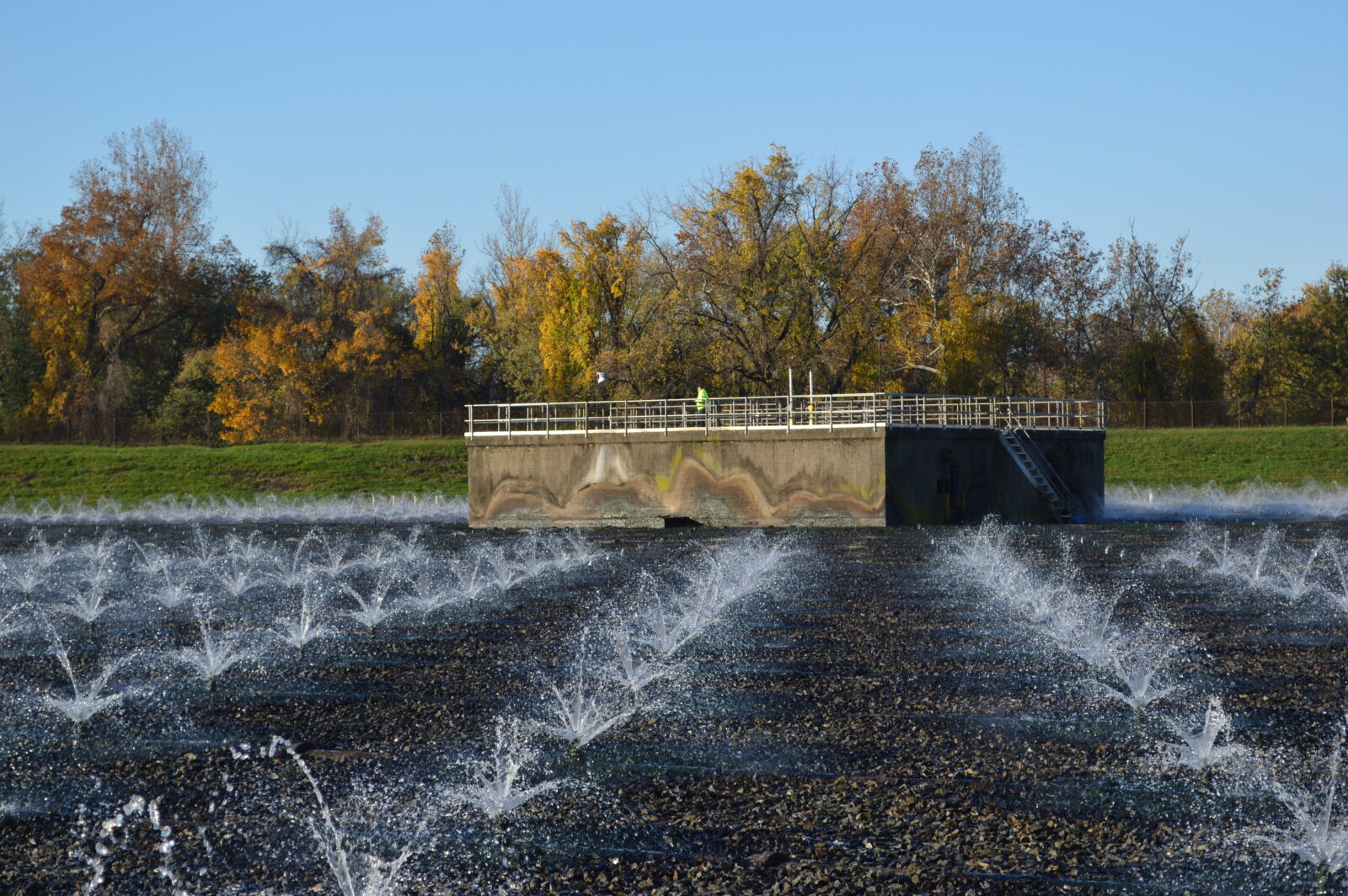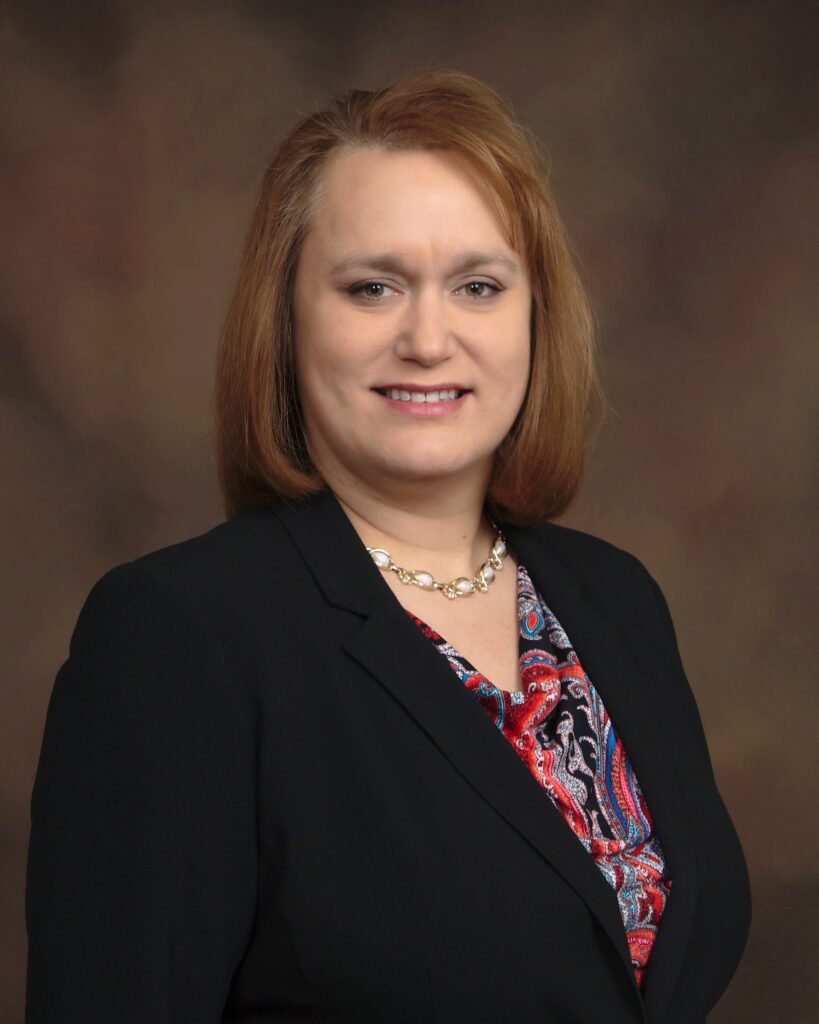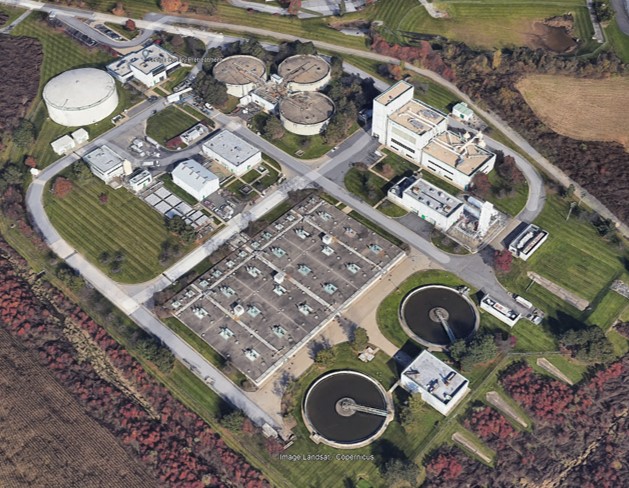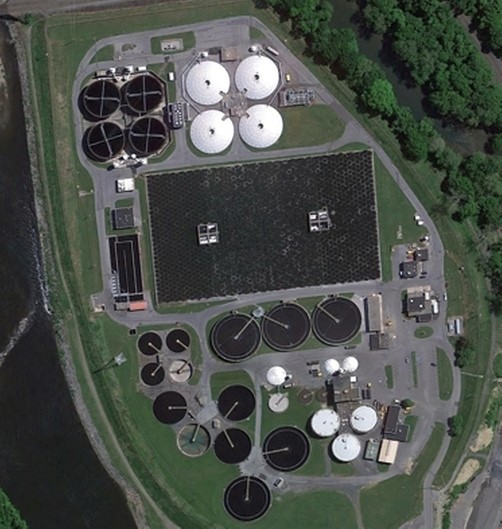LCA’s CEO Featured on Good Morning Lehigh Valley
 December 6, 2023
December 6, 2023Liesel Gross discusses infrastructure upgrades, the role of our treatment plants, stormwater vs. sewer, and more.
Our CEO Liesel Gross took to the airwaves recently to talk about all things water on “Good Morning Lehigh Valley,” a new radio show hosted by former Lehigh County Commissioner Brad Osborne. To hear the entire interview, please click here.
Here’s a shortened version of their chat that’s been edited for length and clarity.
Osborne: One of the things in life many of us take for granted is the ready supply of clean, safe water and sanitary sewer service … Here’s an opportunity to help us all understand a little bit more about Lehigh County Authority, what its mission is, and maybe what its responsibilities are.

Gross: I think it’s really important for the public to understand how critical water and sewer services are for the vitality of our region of our community. Lehigh County Authority has a mission of protecting public health and the environment. That’s the core of what we do. Not everyone really thinks about water service or sewer service as being an investment in environmental protection, but it really is. The largest single investment in environmental protection that a community can make is providing excellent sewer treatment services and public health protection through drinking water services. We provide service to about 270,000 people in Lehigh County. We serve the city of Allentown and about 20 other municipalities that surround the city of Allentown with a mix of water service, sewer service and some other services as well.
Osborne: You also work with other municipalities to have a shared system in some places, is that right?
Gross: Yes, interconnections; we might call it ‘wholesale service’ in our business. We provide service in a variety of different ways, whether it’s directly to your home or your business, or we sell bulk water through these interconnections to some other communities; that’s on the water side. On the wastewater side it’s the opposite, so we’re taking the wastewater from the communities and treating it primarily at the Allentown wastewater treatment plant, Kline’s Island. [Seen in the main photo]
Osborne: Can you just share briefly what’s the difference between storm water and sanitary sewer?
Gross: Absolutely. A lot of times they get mixed up, and sometimes they even get mixed together. In our system, we have a separate sanitary sewer system and a separate stormwater system. LCA is not involved with stormwater, so when you see the grates along the curbing that takes rainwater off the streets – that’s the stormwater system. It collects that rainwater and discharges it out to the environment in safe ways. The sanitary system is the system that takes your wastewater—when you flush your toilet, when you do your laundry, you do your dishes, all of those things—go into the sanitary sewer system, and that goes through a full-scale wastewater treatment plant so it can be safely discharged to the environment.
Osborne: Are there ways, maybe unintended, for stormwater to get into the sanitary sewer system?
Gross: Absolutely, and actually in some communities, it’s planned that way. They’re called combined systems, where the stormwater and the sanitary work together, or flow together, to a treatment plant; or in rain events they combine and discharge out to a river or another body of water. That’s not how we do it here in Lehigh County, and it’s not ideal because stormwater doesn’t require the same level of treatment as sanitary, so keeping them separate means that your sanitary sewer is just sewage, and it can be treated at a dedicated wastewater treatment facility. Now, to your question, though, sometimes stormwater does get into the sanitary system, and that’s through manhole covers or leaking pipes or even if you have a home that’s prone to flooding and you have a sump pump in your basement and it gets piped into the sewer system, that’s actually stormwater that’s getting into the sanitary system. It shouldn’t be there.
Osborne: I know in the community where I live there’s an ordinance that that prevents the homeowner from piping the sump pump discharge into the sanitary sewer service.
…

Osborne: Let’s switch over to wastewater. Tell us a little bit about the pretreatment plant in Fogelsville [seen in the accompanying photo], and then we can get into what Kline’s Island does. What’s its purpose, and who does it serve?
Gross: A lot of people don’t know about the pre-treatment plant, so I’m glad you’re asking. They see it on the side of Route 100 but don’t know what it is. It is an industrial pre-treatment plant. We treat wastewater there from the industries in western Lehigh County; the food and beverage manufacturers that are located primarily in the Fogelsville area. Those food and beverage manufacturers discharge a higher strength waste, so if you can imagine let’s say brewing beer, just for example, the wastewater that’s created from brewing beer would be very different from the wastewater that a household discharges from flushing and washing dishes. So the pretreatment plant takes that higher-strength waste, removes that organic material, and brings it down to a lower level so that it can be discharged back into the pipe. Then it’s connected all the way down to Allentown for final treatment and discharge.
Osborne: Directly, with no other lines joining it on the way?
Gross: No, it’s part of the whole system, so it goes into what we call the Western Lehigh Interceptor … it’s a major pipeline that runs from roughly Fogelsville across Lower Macungie Township and then through the Parkway system down to Allentown, and all the communities interconnect along the way into that pipeline, and the other pump stations, etc. So the waste from the pre-treatment plant gets intermingled with domestic waste.
Osborne: And I guess its waste is different coming out of pretreatment plant?
Gross: That pre-treatment plant actually treats to almost what we call discharge quality water, so it’s treated to a very high degree and has very little of anything in it, but it’s not discharge quality and there’s no receiving body of water nearby for us to discharge to, so it goes into the main system and then goes to Allentown for final treatment. It’s a really important facility, and I don’t want to pass through the conversation without talking about what a huge regional asset that pretreatment plant is, because of the client base or the customer base there, being those manufacturing facilities. That’s a major economic driver for Lehigh County in terms of jobs and production and output, and that wouldn’t be possible without that facility being there.
Osborne: Tell us a little bit about Kline’s Island [seen in the accompanying photo]. What does that do for our community?
Gross: Kline’s Island is another really critical facility, built in 1928, so it’s almost 100 years old. And it’s been upgraded since then; it was upgraded again in the 1970s or so. It’s rated to treat 40 million gallons of wastewater per day; we’re currently receiving about 32 million gallons of wastewater per day from the 270,000 plus people that are connected to that system. So there are 15 municipalities; the City of Allentown and 14 surrounding communities, that all flow their wastewater down to the Kline’s Island treatment plant. It’s receiving wastewater from homes and businesses throughout Lehigh County and treating it to a very high degree so that it can be discharged safely back into the environment. It discharges to the Lehigh River and then it’s part of the environment from there.

Osborne: Let’s be clear, when you say it discharges to the Lehigh River that is by permit and there’s testing and reporting, I’m sure.
Gross: Absolutely; there’s automatic monitoring that happens throughout the plant, so we know what’s happening at various stages of the treatment process, as well as required monitoring that gets reported to DEP on a very regular basis for things like nitrogen and chlorine and bacteria and all those kinds of things that you don’t want necessarily discharged out to the river.
Osborne: You had mentioned the capacity of the plant is about 40 million gallons a day, even though it was originally started up in 1928, but with infrastructure upgrades along the way. … It does seem that we have rain events that are hitting the roof at times, whereas even 10 years ago we didn’t have quite this number of events. We were talking about the difference between stormwater and sanitary sewer. Tell us a little bit, technically, how does rain in abundant amounts affect Kline’s Island, and why?
Gross: That’s a great question Brad, and really goes to a couple of different issues. No. 1 is the age of the system itself. We talked earlier about rainwater getting into the system through manholes or through cracks in the pipe or things of that nature. When we have more rain, more of that water is getting into the system; that’s the infiltration and inflow problem.
Osborne: Those are two key technical terms …
Gross: Yes, so we call it “I and I.” When we have a lot of “I and I,” or infiltration into the system, then during those rain events we can see the wastewater that’s coming to Kline’s Island peak from a normal average of 32 million gallons per day up to 90 million gallons per day, or higher at times. And that’s right now; that’s what’s happening today. And that’s because of the age of the system, and the rainwater getting into the system. We need to tighten the system up so that doesn’t happen, but also there’s a lot of wastewater that can’t make its way to Kline’s Island because of bottlenecks in the system and other factors. So sometimes sewage will overflow out of manholes; instead of rainwater getting in, we’ll have sewage actually coming out of those manholes, because the system is so full on a peak day during a wet weather event.
That’s a major problem that we’re experiencing already. In the future, as the rain events potentially get worse or more frequent, we would expect to see that happen more frequently unless we do something about it.
One of the things that we’re working on is what’s called an Act 537 Plan. It’s really just a regional sewer plan. The facility as I mentioned at Kline’s Island was built in 1928. A lot of those major interceptors that I mentioned earlier were built in the 1970s and ’80s, so they’re old. They were sized, at that time, for about 50 years of growth. Well, we’re at the 50-year mark and the growth has happened, and then some.
So we’ll need to probably upsize those pipes and make some upsizing of the pumps at Kline’s Island so we can handle more flow, and at the same time try to tighten up those leaks and cracks and keep the rainwater from getting into the system.
Osborne: As you’re describing the problem, the solution isn’t all entirely in LCA’s hands, is it? Because the municipalities own some of their own pipes.
Gross: Yeah, the municipal systems really need a lot of work, too. You were talking about collaboration earlier, and that’s really where I’ve been focusing a lot of my efforts in recent months and years … working with the municipalities and my team as well as the engineers that are part of the team to help us understand where that excess flow is coming from, and help the municipalities formulate ideas for how they can rehabilitate their own sewer collection systems in the municipality, so we stop that rainwater from getting into the system in the first place.
…
Osborne: In our society, when organizations have difficulty in their operations, we have a tendency towards, “They must be hiding something; there must be something wrong that’s not being shared with us.” So with that, how does LCA ensure transparency and address the concerns of consumers in situations that they may not even understand?
Gross: It’s difficult. I think you’re right; there is a tendency, potentially, to not share because the topics are complicated.
Osborne: And sometimes unpleasant.
Gross: Yes, and that’s a tendency that a lot of utilities, historically, have kind of fallen prey to. But LCA we’ve really tried to embrace transparency as a core value or a way that we operate from both the board of directors standpoint as well as an organization. We tend to be very customer-focused in terms of the decision-making for projects and how we plan out projects. You can see that in how we handle things, like our website. You can go to our website and have years of archives of meeting minutes and meeting videos and all those sorts of things.

We also have some newer things trying to blend technology with customer communication as well, so if you’re living somewhere and you have a problem with a water main break [accompanying photo] you will potentially get a phone call from us through our system, but then you can also go to our website and we have what’s called an “outage map.” You can look at a map, plug in your address and see what’s happening in your area, what’s affecting your property, and we try to make that front and center in terms of customer communication … put it on social media and put it out for media as well. We’re trying to be as transparent and open as we can. That helps us because then the customer knows what’s going on; it reduces phone calls, and it reduces stress for our team because the customer just knows where to go to get the information.
Osborne: You’re mentioning, Liesel, about technology and how that’s used in education and communication with the public. Is LCA using technology in its operations to improve its operations?
Gross: Yeah, and big time. We have been early adopters of technology, over time. We have systems in place to automate data collection on water quality and pumping rates and all those kinds of things to help us automate our services or our operation that comes through our network to our operators so they can see what’s happening in the system no matter where they are. That’s a huge thing; we’ve been doing that for a long time.
We also were early adopters of GIS technology, which is geographic information systems mapping, digital mapping, and we are using our GIS system now to integrate with a multitude of other types of systems so customer information systems, maintenance management systems, all of that sort of database structure to give us information at our fingertips about where assets are, how we’re maintaining them, what it’s costing us, what the impact to the customer is.
Osborne: We’re talking about technology improvements and also other improvements which are not high tech that need to be done in terms of replacing pipes, and reducing infiltration, and all that. What kind of capital planning budget do you have to support the programs that you’re talking about?
Gross: Very good timing. Just yesterday we had a board of directors meeting and they approved our next five-year capital plan. We do a new five-year plan every year, so it’s a rolling plan. This year’s capital plan that was approved just yesterday is $261 million [for the whole five years].
Osborne: So approximately $50-some million a year.
Gross: Yeah; our capital budget that’s been proposed for 2024 is $51 million.
Osborne: And what can you do with that, what are your plans with that?
Gross: There’s a lot of projects, a lot of programs in the plan. The $261 million is for a lot of repair and replacement work, like the main replacements, regular upkeep of aging infrastructure, those sorts of things. We have about $80 million of regular work built into the plan. We also have a couple of newer programs built into that $261 million plan. First is the lead service line replacement program. … There are grants available right now through the bipartisan infrastructure bill. That grant funding has a deadline on it in the next two or three years, that grant funding won’t be available anymore unless it’s renewed, so we’re trying to maximize our ability to do lead service line replacements and potentially receive grant funding for that. So it’s a very large chunk of funding that we have in the plan. We also have quite a few projects that are related to the sewer program that we talked about. We operate the wastewater system under the terms of a 50-year lease agreement with Allentown and we have a pretty aggressive infiltration and inflow removal program that we’re kicking off next year in the city, and that’ll go over the next 10 years or so, as well as some upgrades to Kline’s Island.
Osborne: So the investment, over a five-year period, of that $261 million, is that distributed in some planned way throughout your service area and not just for the city of Allentown?
Gross: Yeah, it’s distributed based on the need. So again if you would go to lehighcountyauthority.org you can download copies of the plan and see each project, where it all is. We have the Allentown division that’s broken up into water and sewer, and then we have our suburban division, also water and sewer; and we have very specific projects laid out for all of those divisions, and what they’re going to cost and how we’ll pay for them.
Osborne: That’s part of the transparency; how ratepayers’ money is being spent and invested, really.
Gross: Absolutely. And speaking of the rates and how we fund such a large investment, one of the things is, it’s a big number, $261 million, but we do see about 50% of that being funded fully through the current rates and operation, so we’re not borrowing $261 million; we are funding at least 50% through current rates. And then we’ll do some borrowing and then also we’ll be seeking those grants for the lead service line program.
Osborne: So reasonably speaking, you may need a rate increase over that five-year period, or increases depending on the situation at the time.
Gross: Yeah, and that’s one of the key things that we have to be talking about much more openly, is the need for rate increases. Not just for LCA, but for all of the 550 utilities across Pennsylvania and across the nation. When you’re talking about big issues like aging infrastructure, new regulations, dealing with the impacts of potential climate change, all of those projects and programs will require rate increases. The current projection is that rate increases will outpace inflation for the foreseeable future for water and sewer, for all utilities, and that’s what we’re seeing here at LCA.
We’re seeing rate increases that are in the 4% or 5% increase per year for a good long period of time.
Osborne: I appreciate you answering that Liesel, it’s not something that I’m sure is pleasant. You would much prefer as an organization to not affect the homeowners in a significant financial way, but what you’re describing to us is the need. And if we want to, as residents and businesses, have the kind of service and maybe even better service in the future, there’s a cost of doing that.
Gross: We try to be as open as we can about the need, but also to think about the impact to the customer and where there are customers that have difficulty with those rates, what are ways that we can help them through affordability programs or customer assistance programs. We do spend quite a bit of time talking and thinking about that as well, because we know that over time if rate increases are outpacing inflation there will be customers that will have difficulty with their water and sewer bill. We have customers today who have difficulty with their water and sewer bill, so I’m trying to build that into the service that we provide some affordability-type programs.
Osborne: Is there any way that residents and businesses can support LCA’s mission and actually in doing that help themselves?
Gross: I think the community education and community involvement is the key; that’s the stepping stone. So having these conversations like I’m having with you, and having with other key stakeholders as well; creating an understanding and awareness of the need is the first step. And then providing support, whether it’s creative ideas or it’s just support for the funding that we need, so when we need to do a rate increase, to have some understanding about that and support for it within the community really is helpful. We do have some industry user groups that we speak with pretty regularly about what’s happening with our system so they understand, as well as trying to get out to speak with Chamber of Commerce and other community groups like that, so there’s just a greater awareness of what we’re doing. And that support is really critical when we have to make some hard decisions.
Osborne: What influence would you give individuals who may be interested in a career in the water and wastewater industry?
Gross: Oh, please sign up! Please apply! I think like every organization out there, workforce challenges have been difficult for us. I think on top of that, not a lot of people really understand what work in water might mean, or that there is an opportunity there. … There are great career opportunities, working in water and wastewater. We have careers in just about every field imaginable; so it’s technical, it’s IT, it’s engineering, it’s environmental science, financial, chemistry, customer service, HR—you know we have departments that span the course of every business; departments that are needed just to run the business. But then on top of that, there’s that mission-focused drive to do good things for the community; you know, come to work every day and protect public health and the environment. It’s a great day to come to work, And we hope that young people understand that, and would be inspired by that to come and join us in the water field.
Osborne: What message or key takeaway would you like our listeners to remember about LCA and your mission?
Gross: I’ve mentioned it a few times about protecting public health and the environment; that is our mission. And I think it’s a really critical one … water and sewer is often thought of as a silent service, or you don’t think of it at all … it’s taken for granted. But it’s so essential for protecting ourselves from what’s out there, in terms of public health, protecting the environment, and then so essential for a vital economy that we have here in Lehigh County. We are proud of what we do, and we hope customers will understand that and communicate with us.

“Good Morning Lehigh Valley” airs Tuesdays on WGPA Sunny 1100 AM.